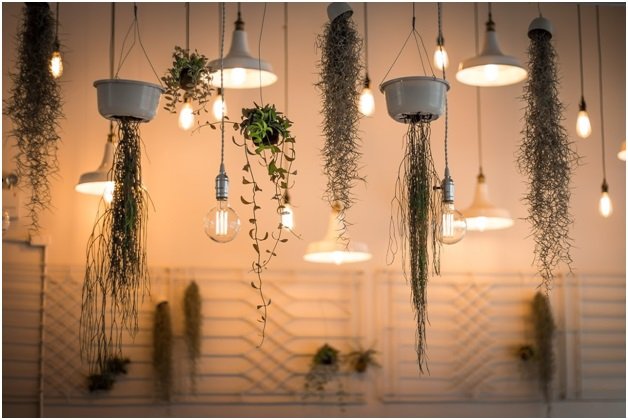Tube lights and bulb have a different feel when it comes to their ambiance effect. It depends on a person’s mood whether he or she like fluorescent light of a tube light or a warm glow feel of a bulb.Sydney electrician helps you with all your electricity-related issues, including the selection of fixtures and bulbs.
Here are a few comparisons between tube light and bulb:
How They Work
Tube light and bulb work differently and that’s why the light they emit is also different. Tube light works on a low-pressure mercury-vapor gas, discharge lamp. To produce visible light it uses illumination. Illumination works through the ionization of mercury vapor in a glass tube. This ionizing mercury vapor in a glass tube causes the UV in the photons to emit electrons in the gas. Using a phosphorous coating inside the tube, ultraviolet light is then converted into standard visible light. Whereas bulbs use thin tungsten wires to pass electricity through them. This wire is known as filament and if this wire is damaged it means the current will stop flowing.
Currents heat up the wire in the bulb and when the filament gets so hot it produces light. This process is a conversion of electrical energy to light energy. Even today bulbs are the only source of light in some countries.
Brightness Level Comparison
Lumens determines the level of brightness of tube lights and bulbs. The higher the lumens the brighter the light will be and when the amount of lumens has less brightness automatically falls. The new technology which is designed to save energy on bulbs and tube lights uses lumens as its source. If you want a reliable source that can mark the brightness of the light bulb then you must use lumens. The use as wattage has significantly been decreased for taking such measurements.
Bulbs can have a similar level of lumen but the energy they consume varies, one can take less energy and the other more energy to produce the same level of brightness. The type of bulb doesn’t matter when it comes to brightness check, all you need is to read on the packaging the lumens ratio. The next time you shop for a bright light pick the one with the highest number of lumens.
Another useful tip is to choose low wattage bulbs to save energy. Brightness wise tube lights give more light and bulbs having fewer lumens give less light.
Life Span
The new technology of LED lights has made a mark on the market. This impressive technology has proved its undisputed longevity by having a good life as compared to other lights. When it comes to tube light and bulb lifespan comparison the numbers are quite obvious. For a bulb its 1200 hours and for tube lights its 7000 hours. Hence tube light’s lifespan is better as compared to the light bulb.
Voltage Fluctuation Issues and Turning On
For quick response light bulbs are the best, when you switch on the button it instantly lights up. As soon as the current reaches the tungsten wire it lights up by completing the circuit. Bulbs have a steady light if they are provided with a steady voltage flow. Tube lights on the other hand flicker and take a few seconds to light up. This time they take is due to the warm-up period. Constant and repeated flicker can damage the tube light if the tube light changes its color at both ends it means the lifespan of it is coming to an end.
Tube lights are more sensitive to voltage change and bulbs can somehow deal with this problem.Voltage fluctuationsare not good for bulbs, tube lights, and other electronic devices. Light bulb and tube lights perform poorly when they have other power sources such as a generator.
Efficiency Check
In tube lights the light is produced by fluorescence, it emits less heat and saves more energy. The lumens production is higher than light bulbs and hence proves that how efficient it is. The lumen production for tube lights is 40-90 lumens per watt.
The Ultraviolet Issue
Since the tube light is covered with ta phosphorous light, it produces white energy. TheUV radiation is stored and intact in the tube but it can always come out and it’s a major threat. These lights installed all over the world. Lights bulbs, on the other hand, are designed to reduce UV. If you keep a tube light switched for a longer period it will start emitting that UV radiation to the surroundings. You can avoid this by switching off the lights every time you leave the room.
Heat Emissions
Heat emission cannot be denied in tube lights and bulbs, the only difference is the amount of heat that is produced. This heat plays its part in the ongoing heat pollution. When the heat is lost or absorbed by the atmosphere, Fluorescent lights emit heat that is absorbed or lost to the atmosphere by the balance. Tube lights emit less heat than lights bulbs and in farmhouses and nurseries, the fruit and vegetable that need time to grow are kept under this light bulb. Tube Light emits lesser light than the Light Bulb.
Cost
Cost-wise these lights have a huge difference, because of the heat emission of light bulbs it uses more energy and is costly. Cost comparison also includes the number of tube lights and bulbs changed in one year due to a fault. Early energy consumption of tube light is very less, that’s why most public spaces, schools, and malls have tube lights. If you are considering to install lights for a big space and have a limited budget, you should defiantly buy tube lights.
Conclusion
Tube lights vs bulbs are a choice, whichever you like the most will be better for you. If a restaurant wants a dim glow with some warm effect then they will get light bulbs. Always turned off your extra lights to save energy and unwanted heat emissions in the environment.


